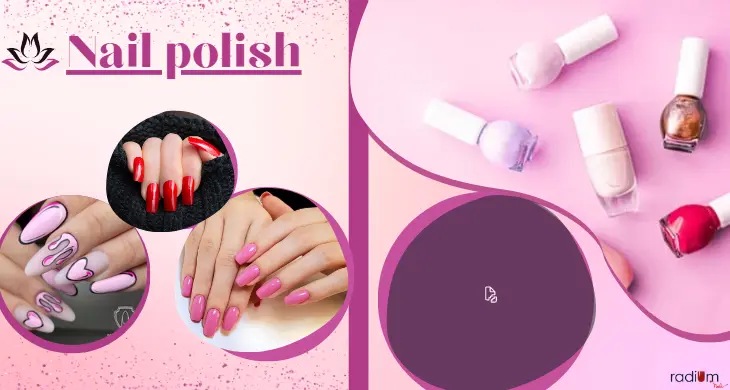Welcome to a fascinating journey into the colorful world of nail polish! Often seen as a simple cosmetic accessory ,nail polish has a rich history and intriguing secrets hidden beneath its shiny surface. In this compilation, we will unveil 30 interesting and surprising facts about nail polish that you probably didn’t know before. From ancient origins to modern innovations ,prepare to be amazed by the remarkable stories and quirky details that make nail polish more than just a fashion statement. Let’s dive in and explore the enchanting universe of nail polish!
- Nail polish, also called as nail varnish or nail enamel,is a cosmetic product used to beautify and protect the nails.
- Nail polish can be traced back to ancient China,where it was first invented around 3000BCE.
- In ancient Egypt, nail polish was used to signify social status,with upper-class individuals wearing rich colors like red.
- The first commercially available nail polish was introduced in the 1920 s by a French makeup artist named Michelle Ménard.
- Nail polish typically consists of a liquid mixture of film-forming agents, solvents, pigments,& additives.
- The film-forming agents in nail polish create a hard and glossy finish on the nails.
- Nitrocellulose is a common film-forming agent used in nail polish that provides durability &shine.
- Solvents like ethyl acetate and butyl acetate are used to dissolve the nitrocellulose &other ingredients in nail polish.
- Pigments are added to give color to the nail polish.These pigments can be organic or inorganic compounds.
- Titanium dioxide is a commonly used white pigment in nail polish,while iron oxides are used for red and brown shades.
- Nail polish can come in a wide variety of colors, from classic reds & pinks to bold blues and greens.
- The opacity of nail polish depends on its pigmentation. Depending on the color,multiple coats may be required for full coverage.
- Nail polish can be categorized into different finishes,including cremes, metallics, shimmers, glitters, and sheers.
- Matte nail polish has a non-glossy finish and is often used for nail art or as a base for other designs.
- Nail polish can also be scented,with fragrances ranging from floral to fruity.
- Clear nail polish, also known as top coat,is applied over colored polish to enhance shine and protect the color from chipping.
- A base coat is a clear varnish that is applied before color varnish to prevent coloration and improve adhesion.
- Nail polish removers are used to dissolve & remove nail polish from the nails.They usually contain acetone or non-acetone solvents.
- French manicure is a popular nail style that involves applying a pale pink or nude polish to the entire nail and white polish to the tips.
- Nail polish can be customized with nail art, including designs, patterns, and embellishments like rhinestones or decals.
- Magnetic nail polish contains iron particles that create unique patterns when a magnet is held near the wet polish.
- Gel nail polish is a type of nail polish that requires curing under a UV or LED lamp to harden and provide long-lasting wear.
- Gel polish is known for its chip-resistant and glossy finish, and it can last up to two weeks without chipping.
- Water-based nail polish is an alternative to traditional solvent-based polishes and is considered more environmentally friendly.
- Nail polish has a shelf life of about one to two years,depending on the ingredients and storage conditions.
- Neon nail polish contains fluorescent pigments that glow under blacklight.
- Holographic nail polish contains small particles that create a rainbow effect when reflecting light.
- Some nail polishes are marketed as “quick-dry,” designed to dry faster than regular formulas.
- Nail polish can be used for more than just nails. It can be applied to decorate phone cases,jewelry,or other surfaces.
- Magnetic nail polish was first introduced in 2011 & quickly gained popularity for its unique patterns.
Conclusion:
As we conclude our exploration of the captivating realm of nail polish, we have learned that there’s so much more to this seemingly ordinary beauty product than meets the eye. From its ancient beginnings as henna-based dyes to the revolutionary advancements in gel and shellac formulas, nail polish has undergone a fascinating evolution.
You may also love to read
Nail Nutrition: Essential for Thick Nails

